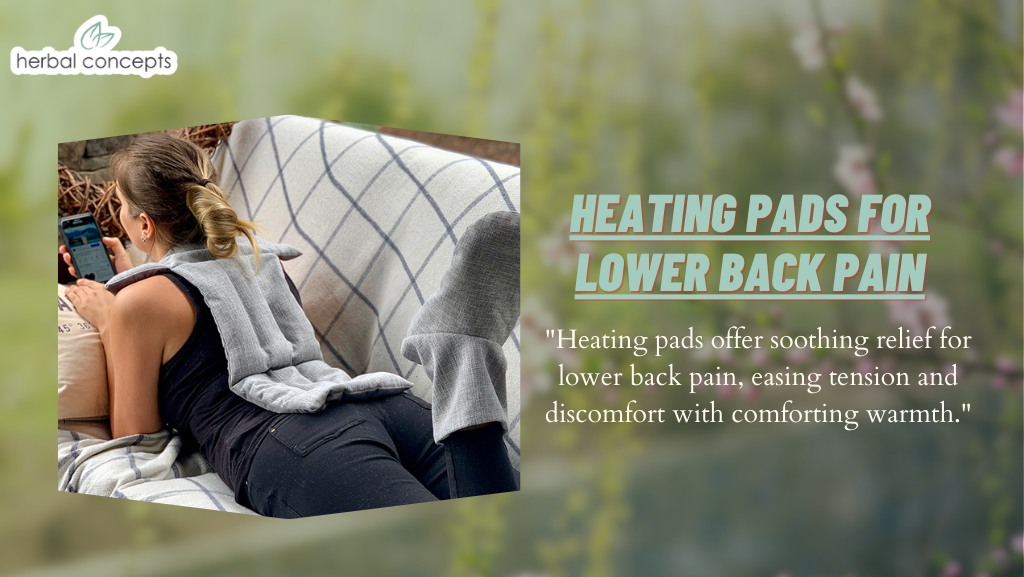
Relief for Lower Back Pain: The Power of Heating Pads
Lower back pain is a common ailment that can disrupt daily activities and diminish quality of life. Whether it's caused by muscle strain, poor posture, or underlying medical conditions, finding effective relief is essential for restoring comfort and mobility. One popular and effective solution for alleviating lower back pain is the use of heating pads. In this comprehensive guide, we'll explore the benefits of heating pads for lower back pain, how they work, and tips for using them effectively.
Understanding Heating Pads
Heating pads are therapeutic devices designed to deliver targeted warmth to specific areas of the body. They typically consist of a soft, flexible pad or wrap that contains elements capable of generating heat, such as electrical coils or microwavable materials like rice or gel beads. When applied to the lower back, heating pads emit a gentle warmth that penetrates deep into the muscles, helping to relax tension, alleviate pain, and improve circulation.
Benefits of Heating Pads for Lower Back Pain
- Muscle Relaxation: Heat therapy is known for its ability to relax tense muscles and ease stiffness. By applying a heating pad to the lower back, you can promote muscle relaxation, reduce tightness, and enhance flexibility, which can help alleviate discomfort and improve range of motion.
- Pain Relief: Heating pads can provide effective pain relief for various types of lower back pain, including muscle strains, sprains, and chronic conditions like sciatica or arthritis. The warmth generated by the pad helps soothe aches and pains, numbing the area and reducing the perception of discomfort.
- Improved Circulation: Heat therapy promotes vasodilation, or the widening of blood vessels, which enhances blood flow to the affected area. Improved circulation delivers oxygen and nutrients to the muscles, aiding in the repair process and promoting healing.
- Increased Comfort: The gentle warmth of a heating pad can create a comforting sensation that helps individuals relax and unwind. Using a heating pad for lower back pain can provide a sense of comfort and relief, allowing individuals to rest more comfortably and sleep better at night.
How to Use a Heating Pad for Lower Back Pain
Using a heating pad for lower back pain is simple and straightforward. Here's a step-by-step guide:
- Choose the Right Heating Pad: Select a heating pad that is specifically designed for use on the lower back. Look for a pad that is large enough to cover the affected area comfortably and has adjustable heat settings for personalized comfort.
- Prepare the Heating Pad: If using an electric heating pad, plug it into a power source and adjust the heat settings to your desired level. If using a microwavable heating pad, follow the heating instructions provided by the manufacturer to ensure safe and effective use.
- Apply to the Lower Back: Place the heating pad directly onto the lower back, ensuring that it covers the area experiencing pain or discomfort. Adjust the position of the pad as needed to target specific areas of tension or tightness.
- Relax and Enjoy: Once the heating pad is in place, relax and allow the warmth to penetrate deep into the muscles. You can sit or lie down comfortably while using the heating pad, depending on your preference.
- Limit Use: Limit each session with the heating pad to 20-30 minutes to prevent overheating and minimize the risk of skin irritation or burns. Allow your skin to cool down between uses before reapplying the heating pad.
In Conclusion
Heating pads offer a safe, effective, and convenient way to relieve lower back pain and promote muscle relaxation. By harnessing the power of heat therapy, individuals can alleviate discomfort, improve circulation, and enhance overall comfort and well-being. Incorporating the use of a heating pad into your self-care routine can provide much-needed relief from lower back pain, allowing you to enjoy greater mobility and a better quality of life.